Learning about Monoprinting
Are you familiar with monoprinting? Think finger painting and you’ll be pretty close. With monoprinting, (one print,) you put paint, etc. on a non-porous surface and create a design in it. Then, you lay paper or fabric over it to pick up the color.
I’ve been experimenting with the technique using thickened dye on fabric. It can also be done with paint, but not anything too thin.
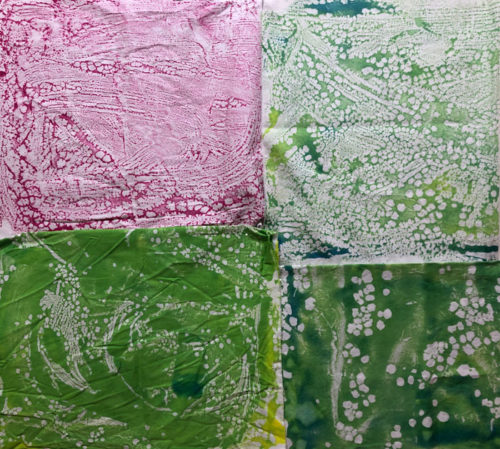
The base product makes a big difference
How cool are these textured fabrics, above? These were created on a slick, shiny vinyl. On that surface the thickened dye beaded up, like the top two pieces. That’s a very useful pattern. If you lay the paint/dye on more thickly you’ll get more coverage and possibly bigger bubbles, like the two bottom ones. These will be great in a garden piece!
The shiny vinyl is very easy to clean up. When using dye, it just needs a quick wipe with a damp rag.
I also tried monoprinting on a big sheet of craft foam. (That’s the full name. You can buy small sheets of it at a craft store or order a larger piece online.) It’s much more porous and it actually soaks up some of the color. The good news is that it doesn’t bead up, but the bad news is that you’ll spend a bit of time cleaning it.
The fabric below was done in a similar way to the ones above. But, since it was on craft foam this time it didn’t bead up. It did pick up the textures of brush strokes and wrinkles, creating another kind of useful texture.
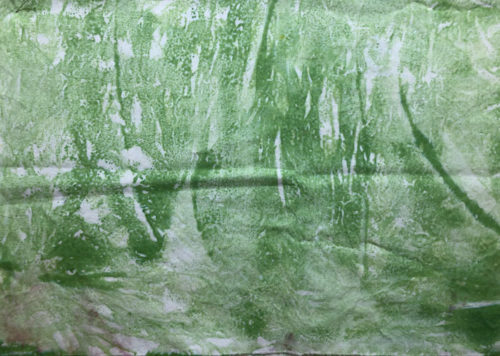
Time for some play and experimentation, next. I squirted on the two circles, then used a brush to add the horizontal lines. For the lines I had squirted on several colors. One of the nice things here is that the colors will move and mix on the foam.
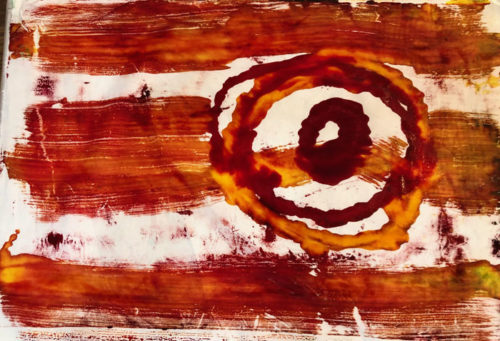
The dye was pretty heavy, so I was able to lay down a second fabric and get a ghost print.
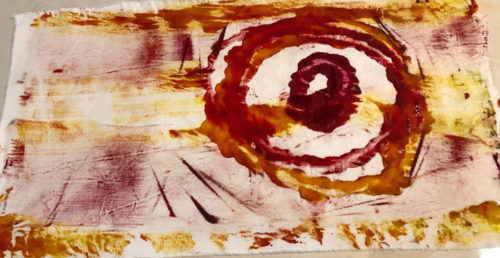
I had great fun squirting on different colors and seeing what happened as the colors blended with each other. Number one is on the left. You can see that the mix includes a pure yellow. But, in the ghost print on the right, the colors have merged some and the pattern has distorted. Very interesting, I think!

You’re supposed to be able to press something into wet paint/dye and lift off the design. I didn’t have good luck with that. On this one, below, I squirted blue and black onto the plastic and mixed them with my foam brush right on the plastic. I had something like bubble wrap with an octagonal design and used it to try to get an impression. As you can see, it didn’t really work. (You can see the shape as it printed on the left edge.) I think I’ll need thicker dye if I want to try this technique again. Still, a very useful fabric.

Now, for the “finger painting.” It’s pretty cool. You can only do it on the craft foam or something similar and you need to put down a pretty heavy, but even, coat of color. Then, you scratch into the color, or press a stamp into it, etc.
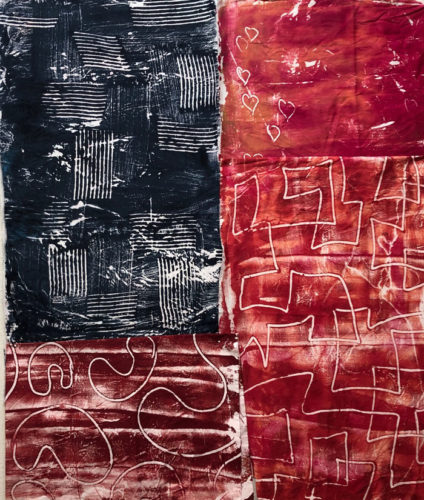
I got a rather streaky effect on some of these, so I’ll need to work on smoother color. (I used a brush on these. I think I’ll use my brayer next time.)
The bottom line for me is that monoprinting has a place in my dyeing/printing tool box. I’ll definitely use it again.
